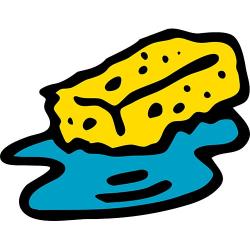Source Institutions
Add to list Go to activity
Activity link broken? See if it's at the internet archive

Learners investigate the concept of humidity by using a dry and wet sponge as a model. They determine a model for 100% humidity, a sponge saturated with water. From this, they understand that percent humidity is the percent saturation of the air. Resource contains vocabulary definitions and suggestions for assessment, extensions, and scaling for different levels of learners.
- Under 5 minutes
- 30 to 45 minutes
- 1 cent - $1 per group of students
- Ages 8 - 14
- Activity, Experiment/Lab Activity
- English
Quick Guide
Materials List (per group of students)
- The day's humidity (sources: newspaper weather page, television or radio weather broadcast, or Internet weather website)
- 1 dry sponge
- 1 plate (plastic or aluminum)
- 1 plastic spoon
- A cup
- Water (1 cup)
- Relative Humidity Graph
- Sponge Saturation Worksheets
- Graph paper (optional)
Subjects
-
Earth and Space Science
-
Earth Processes
- Weather and Climate
-
Earth Structure
- Atmosphere
-
Earth Processes
-
Engineering and Technology
-
Engineering
- Civil Engineering
- Environmental Engineering
-
Engineering
-
Life Sciences
-
Ecology
- Human Impact
-
Ecology
-
Mathematics
-
Data Analysis and Probability
- Data Analysis
- Data Collection
- Data Representation
-
Measurement
- Units of Measurement
-
Number and Operations
- Fractions
-
Data Analysis and Probability
-
Physical Sciences
-
States of Matter
- Liquids
-
States of Matter
-
The Nature of Science
-
The Scientific Process
- Gathering Data
-
The Scientific Process
Audience
To use this activity, learners need to:
- see
- touch
Learning styles supported:
- Involves hands-on or lab activities
Other
Includes alignment to state and/or national standards:
This resource is part of:
Access Rights:
- Free access
By:
- Kolenbrander, Amy ; Yowell, Janet ; Mach, Natalie ; Schaefer Zarske, Malinda ; Carlson, Denise ; Kotys-Schwartz, Daria
Source Collection
- TeachEngineering
Rights:
- All rights reserved, Regents of the University of Colorado, 2004
Funding Sources:
- Fund for the Improvement of Postsecondary Education (FIPSE)
- U.S. Department of Education
- National Science Foundation, 0226322
